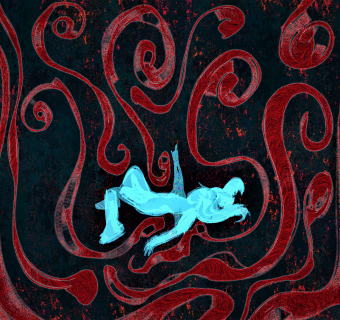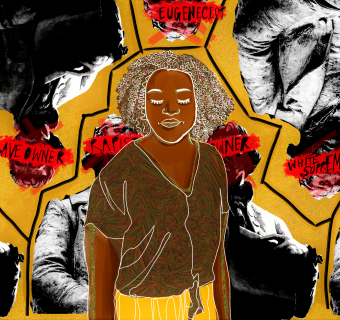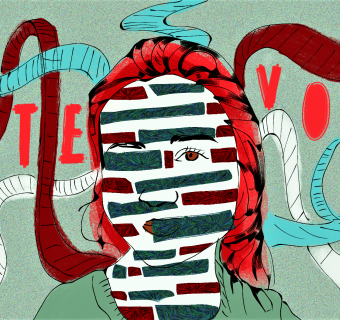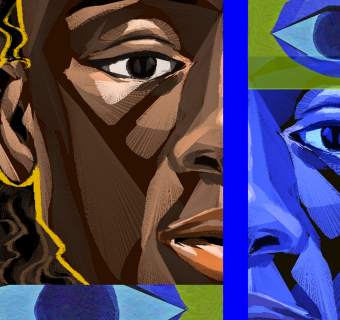If you’re anything like us, you love to read (and you love to read Iris, am I right?). We read because literature, regardless of content or style, is a gateway to thought and passion. Language tells stories, and stories are powerful little entities that can shape and reshape mentalities, take us to faraway lands, allow us to fall in love and hate, and force us to feel. And I mean, force, because you have no choice in the matter – If you are reading, you are feeling, and that’s non-debatable. So, the Iristeam presents our latest column: “The Iris Reading List”, the top 5 pieces you should be reading on a variety of topics.
So, here we go…
To start, let’s talk about immigration. Regardless of how you feel (or how you thought you felt) about immigration policy and law, we are (mostly) all realizing that we may know a lot of immigrants, but we know very little about them. You may know a friend, a hairdresser, a barista at a favorite coffee shop, a favorite pediatrician recommended to you by your older and wiser sister, a neighbor, a man or woman who was not born in the United States. You may know that today, America is their home. But you may realize that you know very little about anything in between those two facts. You know they are this thing called an “immigrant” or a “visitor” or a “foreigner,” but what does that really mean? Stories can help us figure this out. Because immigrant stories are so personal, it is often difficult to encounter comfortable spaces for sharing experiences. Literature gives us that comfort, and lets us find, tell, and share stories that define the “other.”
- The Kite Runner
Khaled Hosseini, an Afghan physician living in California, wrote his first novel, The Kite Runner, as a coming-of-age story narrated by Amir, the young son of an upper-middle-class Afghan family living in Kabul. Growing up with the son of his father’s servant, Hassan, Amir experiences friendship that resembles brotherhood, a love for literature and kites, and a heartbreak that will haunt him for the rest of his life. When war breaks out in Afghanistan, Amir finds himself in a new life in America, where he yearns for his father’s love and betrays Hassan’; wants redemption but needs to forget; and falls in love then loses it all. This NY Times bestseller is a universal tale of love, lies, and atonement that beautifully captures the unique warmth and richness of Afghanistan’s people. This is a must-read.
- Persepolis
Written by Iranian native Marjane Satrapi, Persepolis is an autobiographical graphic novel that manages to make readers laugh, cry, and tremble in fear as this young woman navigates her way through revolution, adolescence, and womanhood. Translated from French, Persepolis depicts the innocence and utter confusion that plague and shape the world around the title character. As Christopher Theokas of USA Today notes,“The simple lines and shapes of Satrapi’s drawings lend poignancy to the story. The fact that she is able to portray such a vast range of emotions with a few simple strokes of a pen is impressive. That she does this consistently for 153 pages is a mighty achievement.” The Guardian gives this book a 10/10, and we think you will see why.
- Exit West
Still hanging out on the NY Times Bestsellers List, Exit West is Mohsin Hamid’s latest publication, telling the fictional tale of Saeed and Nadia as they flee an unidentified country on a journey that takes them through a magical doorway and into Greece, England, and the United States. As these two young lovers explore themselves and their own identities (Nadia’s utter bravery and Saeed’s quiet spirituality), Hamid brilliantly paints a backdrop of normalized war, violence, and re-birth. They drive through military checkpoints on their first date, and think nothing of it. They leave their home, and understand that this is just the way it is. If you’re still not convinced, read this review (and order your copy).
- Esperanza Rising
Not going to lie, this was my favorite childhood book. It tells the story of Esperanza Ortega, the beautiful daughter of a wealthy family in Mexico. Upon the death of her father and complications with his will that she never truly understands, her life turns upside down as her uncle becomes heir of her father’s ranch — over her mother. Heavily involved in politics and concerned with his own images, her uncle asks for Esperanza’s mother’s hand in marriage. She says yes, but she means no — instead, she escapes to America. With her name translating to “hope,” Esperanza celebrates her 15th birthday as the novel comes to a close on the one-year anniversary of her father’s death. Read the book to see everything in between.
- …….
This list is only a start. Truthfully, there are hundreds of immigrant narratives, and each one presents its own value. Furthermore, the immigrant experience changes each year, or rather, each day and each hour, as violence and policies are ever changing and constantly developing. It would be wrong and disrespectful to assume the immigrant experience of a WWII refugee is in any way similar to that of a Syrian refugee or that of a student visa holder arriving at the steps of a university, or any other unique story. So number 5 is a reminder that we must keep reading, and keep listening.
If you have a “Top-5 Things to Read” contribution, a literature review, or just a topic in mind, share with Iris! We want to know what you are reading, and what we should be reading with you.








